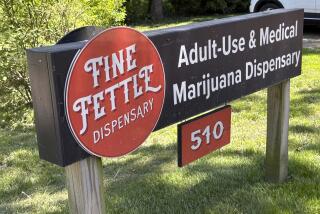Archeology, Economics Conflict in Virgin Islands
- Share via
CHARLOTTE AMALIE, U.S. Virgin Islands — It stands apart from the sprawl of T-shirt stands, souvenir shops and pastel-colored hotels, a swath of untouched land that is home to 1,400-year-old Indian ruins.
The 360 acres surrounding Botany Bay on the western end of St. Thomas island have long been a refuge from the clamor of Charlotte Amalie, one of the busiest cruise ports in the region.
But the spot could become the home to a resort complex with 125 hotel rooms, 80 time-share apartments and 55 condominiums.
That prospect has stirred up environmentalists, pitting them against the cash-strapped government of the U.S. Virgin Islands. “Save Botany Bay” bumper stickers can be seen across the island.
“We keep putting economics first,” said Caroline Brown of the Environmental Assn. of St. Thomas. “We must take a more active role, or we’re going to find ourselves living in a concrete jungle.”
Botany Bay Partners, the group that wants to develop the land, says the project would bring jobs to the island, which, like others in the Caribbean, has suffered economically since the Sept. 11 terrorist attacks dampened vacation travel.
The developers are promising to maintain the archeological sites as an educational center, and say they will take measures to mitigate erosion, sewage discharge and pollution caused by any structures built.
“It is a tremendous amount of jobs that will be created on an ongoing basis,” said Alain Longatte, president and chief executive of Botany Bay Partners. “It’s going to have a great impact on the economy.”
If the developers get the zoning approved, the hotel could open by 2003. Other parts of the complex would be finished in 15 years.
Gov. Charles Turnbull’s economic advisors point to the $169-million project as a sign of better economic times ahead for the U.S. territory, whose local government is $1 billion in debt.
Construction alone would pump $62 million in wages into the Virgin Islands, and $42 million would be spent on materials on the island, according to documents from the developers.
Environmentalists worry about what could be lost.
Botany Bay contains petroglyphs from the Ostionoid Indians, who inhabited the area 1,400 years ago, and there is a ceremonial site that was used by Taino Indians in pre-Columbian days. The property also holds a relatively intact abandoned sugar plantation, including a sugar mill and slave quarters, listed on the National Register of Historic Places.
“Certainly no other property on the island of St. Thomas contains such a diverse area and has been less affected by development in the past 50 years,” said Eleanor Gibney, a botanist.
The area is a refuge for deer and a nesting ground for sea turtles. It also has some of the healthiest coral reefs around St. Thomas.
The land was owned for decades as a family retreat for the heirs of the Corning kitchenware empire, but Botany Bay Partners bought it last year.
The Corning heirs thought the resort project would be much smaller, family attorney Edith Bornn told a recent public hearing.
“The buyers informed us that their intentions were to develop a very limited number of luxury homes, on large lots, keeping traffic to a minimum. It now appears the new owners were misleading us all through the negotiations,” said a letter Bornn read from Paul Corning, grandson of industrialist Warren Corning.
Local Sen. Adlah Donastorg has appealed to the U.S. Department of the Interior to help preserve the land. “In the long term, preserving this area in its natural splendor will provide greater social and economic benefits than a resort development ever could,” Donastorg wrote to the department.
In December, the Senate rezoned the property from residential to commercial use, a first step that allowed developers to apply for building permits. A committee of the Virgin Islands’ Department of Planning and Natural Resources now must consider whether to grant permits for the project.
More to Read
Sign up for Essential California
The most important California stories and recommendations in your inbox every morning.
You may occasionally receive promotional content from the Los Angeles Times.













